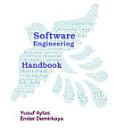Modern Metaheuristics in Image Processing
આ ઇ-પુસ્તક વિશે
લેખક વિશે
Prof. Diego Oliva received the B.S. degree in Electronics and Computer Engineering from the Industrial Technical Education Center (CETI) of Guadalajara, Mexico, in 2007, the M.Sc. degree in Electronic Engineering and Computer Sciences from the University of Guadalajara, Mexico in 2010. He obtained a Ph. D. in Informatics in 2015 from the Universidad Complutense de Madrid. Currently, he is an Associate Professor at the University of Guadalajara in Mexico. He has the distinction of National Researcher Rank 2 by the Mexican Council of Science and Technology. Since 2017 he has been a member of the IEEE. His research interest includes Evolutionary and swarm algorithms, hybridization of evolutionary and swarm algorithms, and Computational intelligence.
Noé Ortega Sánchez received the B.S. degree in Computer Engineering from University of Guadalajara, Mexico in 2008, the M.Sc. degree in Electronic Engineering and Computer Sciences from the University of Guadalajara, Mexico in 2011. Currently he is a Ph. D. student and Lecturer at the University of Guadalajara. His research interest includes Evolutionary and swarm algorithms, Image processing and Computational intelligence.
Salvador Hinojosa is a professor and researcher currently affiliated with the Monterrey Institute of Technology and Higher Education. He holds a PhD in Computer Engineering from the Complutense University of Madrid and a Master's degree in Electronic and Computer Engineering from the University of Guadalajara. His bibliographic contributions extend to more than twenty journal articles and three co-authored and co-edited books dealing with metaheuristics and machine learning for solving problems in image processing, computer vision, energy and smart cities.
Prof. Marco Perez-Cisneros received the BE. on Communications and Electronics Engineering from the University of Guadalajara, Mexico, the M. Eng., from ITESO University Mexico and Ph.D. degree from the University of Manchester, UK. He is Professor and Dean of the Electronics and Computer Science Division of Engineering Campus of the University of Guadalajara, Mexico. Prior to his current appointment, he was Dean of Sciences Division in Tonala Campus and Head of the Department of Computer Science in the Engineering Campus. Since 2000, he is a member of the National Research System in Mexico and since 2018 he is a member of the Mexican National Science Academy. He also serves as associated Editor of the Journal of Mathematical Problems in Engineering.






